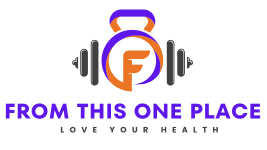In this article, you will discover effective strategies to alleviate upper back pain that can be caused by front squats. With a focus on understanding the root cause of this discomfort, you will learn how to fix it and continue successfully incorporating front squats into your fitness routine. By implementing these practical solutions, you can mitigate the strain on your upper back muscles and enjoy the benefits of front squats without experiencing unnecessary pain or discomfort.

Why Front Squats Cause Upper Back Pain
Front squats are a popular exercise for targeting the muscles in the lower body, particularly the quadriceps, hamstrings, and glutes. However, many individuals experience upper back pain when performing front squats. This discomfort can be attributed to a variety of factors, including improper form, lack of upper back strength, limited shoulder mobility, and incorrect grip and bar position.
Common Causes of Upper Back Pain from Front Squats
Improper Form
One of the primary causes of upper back pain from front squats is using improper form. When executing the movement incorrectly, excessive strain is placed on the upper back muscles, leading to discomfort and potential injury. Common form mistakes include rounding the shoulders, hunching forward, and arching the lower back. These deviations from proper form can place undue stress on the upper back, causing pain and discomfort.
Lack of Upper Back Strength
Another common reason for upper back pain during front squats is a lack of upper back strength. The upper back muscles play a crucial role in stabilizing the weight during front squats. If these muscles are weak or underdeveloped, they may struggle to support the load, resulting in pain and discomfort. Strengthening the upper back can help alleviate this issue and prevent future pain.
Limited Shoulder Mobility
Limited shoulder mobility is another contributing factor to upper back pain during front squats. When performing front squats, proper shoulder mobility is essential for maintaining the correct position of the barbell. If the shoulders are restricted in their range of motion, compensatory movements may occur, such as rounding the upper back or straining the neck. These compensations can lead to upper back pain over time.
Incorrect Grip and Bar Position
An incorrect grip and bar position can also contribute to upper back pain during front squats. Placing the bar too far forward on the shoulders or gripping it too tightly can cause unnecessary strain on the upper back muscles. Additionally, improper hand placement can lead to discomfort in the wrists, elbows, and shoulders, further exacerbating the potential for upper back pain.https://www.youtube.com/embed/icgnTWzgw6U
Proper Form
To alleviate upper back pain during front squats, it is crucial to focus on maintaining proper form throughout the exercise. The following techniques can help ensure correct execution and reduce the risk of discomfort and injury.
1. Warm-Up and Stretching
Before performing front squats, it is essential to warm up the upper back and surrounding muscles to increase blood flow and prepare the body for the exercise. Incorporate dynamic stretches and mobility exercises that target the upper back, shoulders, and thoracic spine. This warm-up routine will help loosen tight muscles and optimize range of motion.
2. Strengthening the Upper Back
Prioritizing upper back strength is key to preventing and alleviating upper back pain during front squats. Exercises such as rows, pull-ups, and deadlifts can effectively target the upper back muscles, increasing their ability to stabilize the weight during front squats. Gradually increasing the intensity and volume of these exercises over time will contribute to stronger, more resilient upper back muscles.
3. Improving Shoulder Mobility
To address limited shoulder mobility, incorporate mobility exercises specifically targeting the shoulders and thoracic spine. Stretching and foam rolling can help increase flexibility in these areas, allowing for better positioning and alignment during front squats. As shoulder mobility improves, the risk of compensatory movements and subsequent upper back pain decreases.
4. Adjusting Grip and Bar Position
Correcting the grip and bar position can significantly alleviate upper back pain from front squats. The barbell should rest on the front of the shoulders, just below the collarbone, with the fingertips lightly supporting its weight. Avoid excessive gripping or placing the bar too far forward, as this can strain the upper back muscles. Experiment with different grip widths and positions to find what feels most comfortable and supportive for your body.
5. Breathing Technique
Proper breathing technique is often overlooked but can make a substantial difference in upper back pain during front squats. Taking deep breaths and bracing the core before descending into the squat allows for increased stability throughout the movement. Maintaining this breath control and core engagement will help distribute the load evenly and alleviate unnecessary strain on the upper back muscles.
6. Stabilizing Core Muscles
A strong and stable core is essential for maintaining proper form during front squats. Engaging the core muscles, including the abdominals and lower back, can help support the weight and reduce the load on the upper back. Incorporating exercises like planks, Russian twists, and leg raises into your training routine can strengthen the core and improve overall stability.
Conclusion
Upper back pain during front squats can be addressed and alleviated by addressing the common causes and focusing on proper form. By warming up, strengthening the upper back, improving shoulder mobility, adjusting grip and bar position, utilizing proper breathing technique, and stabilizing the core muscles, individuals can significantly reduce discomfort and promote a more effective and enjoyable front squat experience. As always, listen to your body, progress gradually, and consult with a fitness professional if you continue to experience persistent upper back pain.




